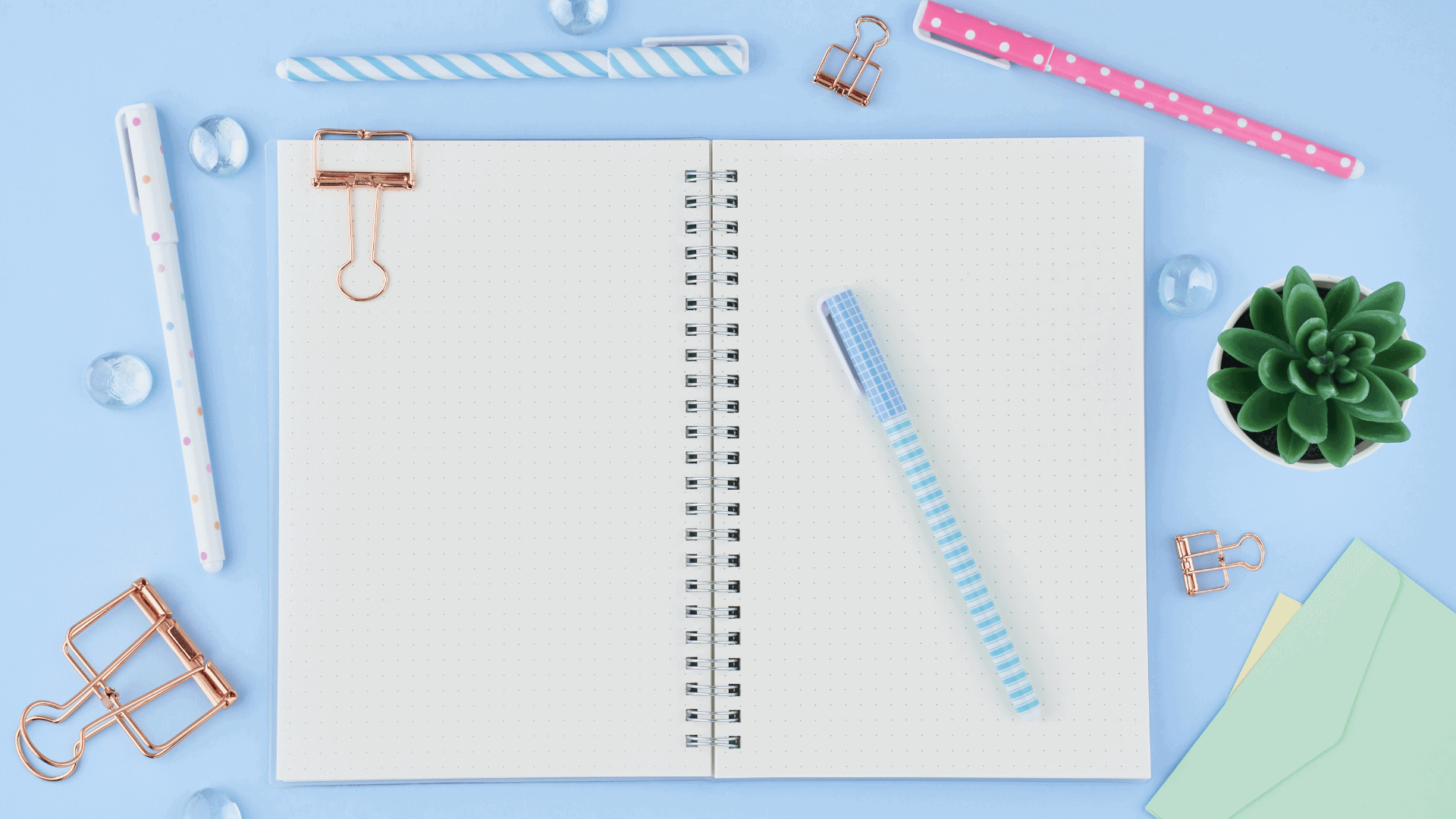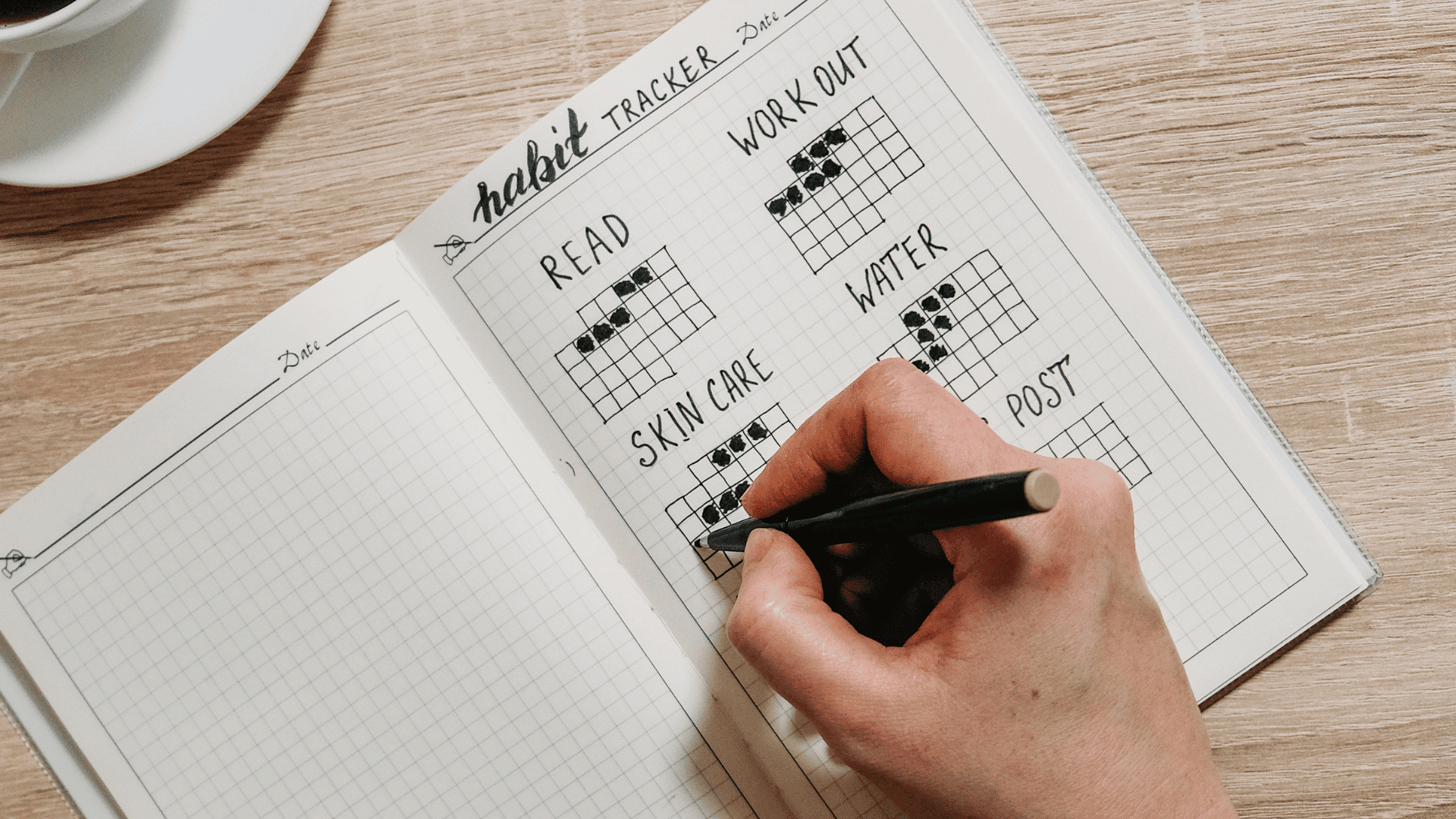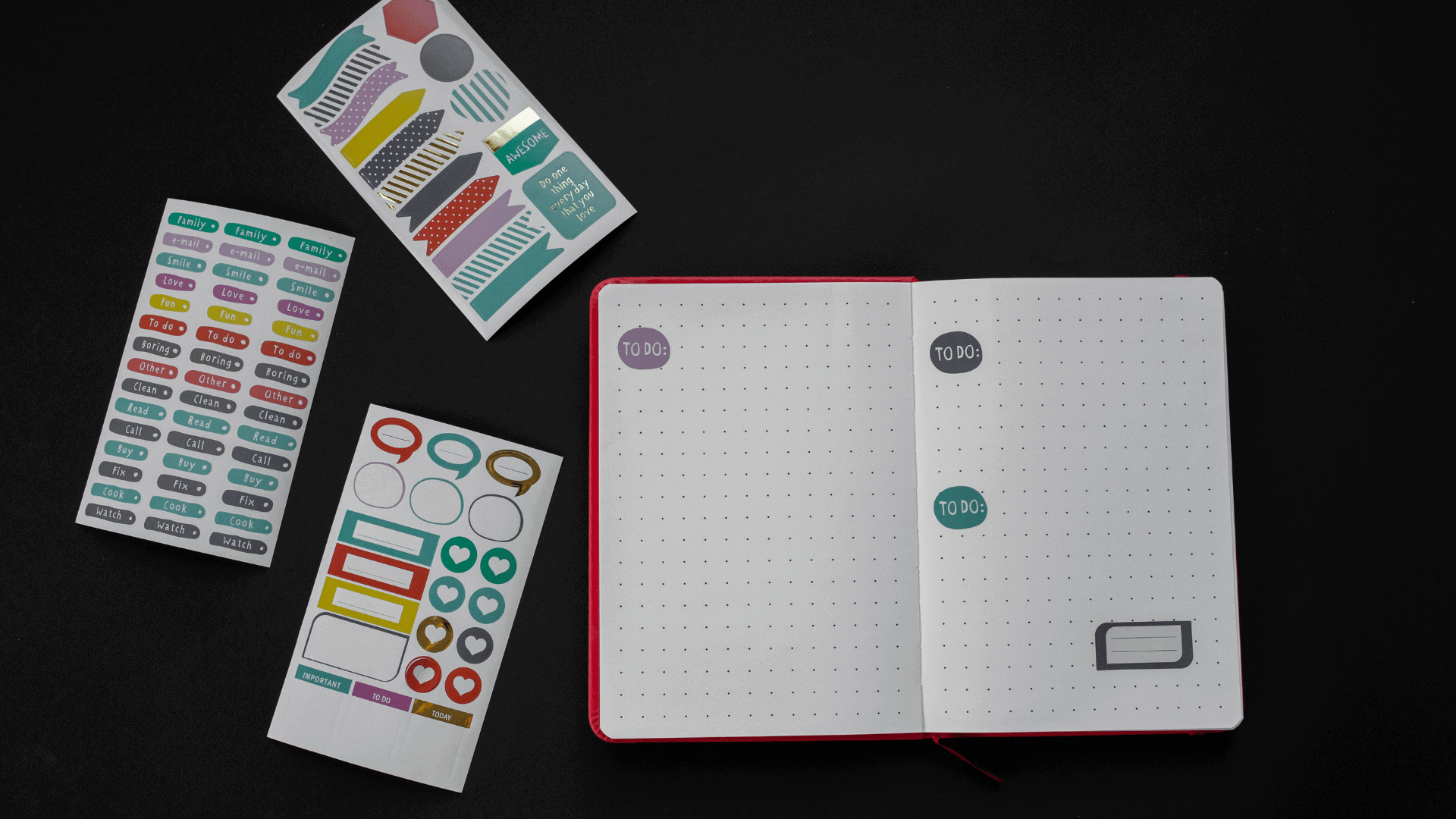Does your bullet journal feel more like a cluttered mess than a helpful tool right now?
After a year of using it, that’s totally NORMAL.
What worked for you last January might not fit your life today, and that’s okay.
Even the best bullet journal systems need a check-in now and then. Life changes. Your goals shift. And your planner should keep up without making you feel overwhelmed (or guilty every time you flip past empty pages).
The good news?
You don’t have to toss your journal or start over from scratch. A simple audit can help you figure out what’s working, what’s not, and how to refresh your setup so it fits YOU right now. Whether you’re juggling work, family, or just want a calmer daily routine, you can absolutely get your bujo back on track and even have fun doing it.
Ready to give your bullet journal the refresh it deserves? Let’s break it down step by step.
Why You Should Audit Your Bullet Journal After a Year
A lot can change in 12 months: your job, your schedule, your priorities (or maybe all three at once). That’s why what worked in your bullet journal last year might feel off now.
And no, it doesn’t mean you failed at planning. It just means it’s time to check in what’s working and what’s not.
Your bullet journal should make life easier, not add to your stress. If flipping through it leaves you feeling more overwhelmed than organized, it’s probably packed with pages or layouts that don’t fit your current life. (Who has time for trackers you stopped filling in months ago?)
Doing a bullet journal audit helps you cut the clutter, spot what’s helping, and let go of what isn’t.
The goal is?
A system that works so you stay productive without the extra mental load. Think of it like decluttering your closet: you’re not throwing everything out, just making space for what actually fits.
So, if your journal’s feeling more chaotic than calming, now’s the perfect time for a refresh.
Looking Back on What Helped and What Didn’t
Before you jump into refreshing your bullet journal, take a minute to look back. Open your bujo through its different pages and ask yourself:
What actually helped me this year?
What felt like a chore?
Some spreads probably made your life easier, maybe your habit tracker helped you stay on top of workouts or daily reading. But other pages? You might’ve avoided them after the first week (looking at you, mood mandala).
That’s normal! The point of this step is to see what was useful and what just took up space.
And as you review, make quick notes right on the pages. Start the layouts that worked. Cross out or circle the ones that didn’t. This makes it super easy to see patterns and plan your refresh without overthinking.
Remember, your bullet journal is there to help you, not to look perfect or impress anyone else.
Keep what serves you, skip the rest.
(And if you feel a little relieved tossing a layout? That’s your sign!)
Clean Up and Archive What You Don’t Need
Now that you’ve spotted what’s working and what isn’t, it’s time to clean things up. A little decluttering can make your bullet journal easy to use again, instead of one more thing that stresses you out.
Go through your pages and take out anything you don’t need anymore. If there are pages you’re not ready to get rid of, that’s okay. Just mark them so you can find them later if you want to look back. A piece of washi tape, a sticky note, or a quick note in your index does the trick.
It also helps to separate the pages you still use from the ones you’re done with. That way, you’re not wasting time opening pages that aren’t helpful anymore.
And if your journal is stuffed and hard to manage, this could be a good time to start fresh. Grab a new notebook, move over what’s working for you right now, and leave the rest behind.
(Kind of like cleaning out your closet, it’s always a good idea, right?)
Clearing out the extra pages gives you space for what matters today and helps you stay focused without the mess.
Refresh Your Goals and Priorities
After a year, it makes sense that your goals and priorities might have changed. This is a great time to pause and see what still matters to you.
Open your bullet journal and look at the big goals you set last year. Are they still what you want? Or has life shifted in a way that calls for a new plan? (Let’s be honest, life loves throwing us curveballs.)
If something no longer fits, don’t hang onto it just because it’s written down. Let it go and make room for what’s important right now.
Use this moment to set up a simple spread for your current priorities. Maybe you want to focus on finding more balance between work and home, saving up for a trip, or carving out more time for yourself. Whatever it is, keep it realistic so you can actually see progress and feel good about it.
One more thing that really helps: add a small gratitude list or wins log. It’s an easy way to remind yourself of what’s going well. And when you see how far you’ve come, it can give you that extra push to keep going.
Redesign Your Bullet Journal Spreads
By now, you probably know which pages in your bullet journal helped you stay organized and which ones didn’t really do much. This is a good time to look through your layouts and make some updates.
Go through your journal and ask yourself what pages you actually used and what pages you kept skipping. If something didn’t work, that’s okay. Bullet journals are meant to change as your needs change.
You can make your habit trackers simpler so they’re quick to update. You can also try weekly pages that give you more space or layouts that feel less packed. Monthly spreads can be as simple or as detailed as you want. (Whatever makes life a little easier at the end of a long day.)
Before you add a new page, sketch it out on scrap paper.
That way, you can test it without feeling stuck with it. Even small changes can help your journal work better.
Add New Pages That Fit Your Life Now
Life changes, and your bullet journal should change with it. What worked for you last year might not match what you need today. Maybe you’re managing work from home, school drop-offs, or trying to keep the grocery list from getting lost (been there).
Keep it simple and useful. A self-care tracker can remind you to slow down and take a break. A budget page can help you see where your money is going. (A tool like the Mini Budget Kit can make it even easier.) A meal planner can save time when you’re figuring out what to make for dinner. A brain dump page gives you a spot to jot down everything that’s on your mind.
You don’t need to add extra pages just to fill space. Pick one or two that fit what matters most right now. Your journal can change as your life does.
Make It Fun Again
If your bullet journal has started to feel like just another thing on your to-do list, this is a good time to make it fun again. It doesn’t have to look perfect or like something you’d see on social media. What matters is that it feels personal and makes you want to use it.
Try adding small touches that brighten it up. Washi tape can add a pop of color. Different pens can help you mix up your headers. A few stickers can make the pages feel more like yours without adding extra work. And if you like to doodle, go ahead and add little sketches in the margins. (A simple flower or coffee cup can make a page a little nicer to look at.)
You can also write down a favorite quote or saying that lifts your mood. The point isn’t to make it perfect. The point is to create a journal that helps you stay organized and makes you want to come back to it.
Create a Mini Plan for Regular Bujo Check-ins
You don’t have to wait a whole year to see what’s working in your bullet journal. Taking a few minutes every few months to look things over can help keep it simple and useful.
Set a reminder in your journal, maybe at the start of each season. When the time comes, go through your pages and see what’s helping, what you’re skipping, and what could use a small update.
To make it easy, write a short list right in your journal so you don’t have to figure it out each time.
It could look like this:
✔ Review my goals
✔ Update pages I’m not using
✔ Add new pages I need
✔ Mark or archive what’s finished
This takes just a few minutes and helps your journal stay helpful and easy to use. (And it’s a good excuse to grab your favorite pens.)
Your Bullet Journal, Your Rules
There’s no perfect bullet journal, and that’s completely fine. Your journal should work for your life, not the other way around. What matters is that it helps you stay organized and makes your days a little easier, not more stressful.
Progress always matters more than perfection. Some months, you might use your journal every day. Other times, you might set it aside for a week or longer. That’s normal. The best part is you can always change things, try a new page, or start fresh when you need to.
Make your journal your own. Add pages that help with what matters right now. Use colors, doodles, or quotes if they brighten your day. And when something isn’t working anymore, adjust it. What counts is that it works for you. (A messy journal that helps is still a win.)
If you’re looking for tools to get started or refresh your setup, the Bullet Journal Starter Kit can give you everything you need in one spot.
It’s a great way to set yourself up for success without the stress of figuring it all out on your own.
Frequently Asked Questions (FAQs)
1. How do I know when to start a new bullet journal?
If your current notebook feels too full, bulky, or hard to manage, it might be time for a fresh start. Also, if flipping through old pages feels distracting or unhelpful, that’s a sign you could benefit from a clean slate.
2. Do I need to change everything in my bujo during an audit?
Nope! The goal of an audit is to keep what works and gently let go of what doesn’t. Focus on small tweaks that make your journal easier and more fun to use.
3. What’s the easiest spread to refresh first?
Start with your weekly or daily layouts. These are the pages you use the most, so small changes like simplifying the structure or adding a tracker can have a big impact right away.
4. How do I keep my bullet journal from feeling like work?
Keep it light. Choose layouts that are simple to fill out, skip pages that don’t help, and add bits of fun like color, stickers, or quick doodles (only if that makes you smile).
5. Can I switch from artsy to minimalist or vice versa?
Absolutely. Your bullet journal can change with your mood or season of life. One month you might want clean lines, and the next you might feel like adding color or sketches. There are no rules just what feels good to you.








